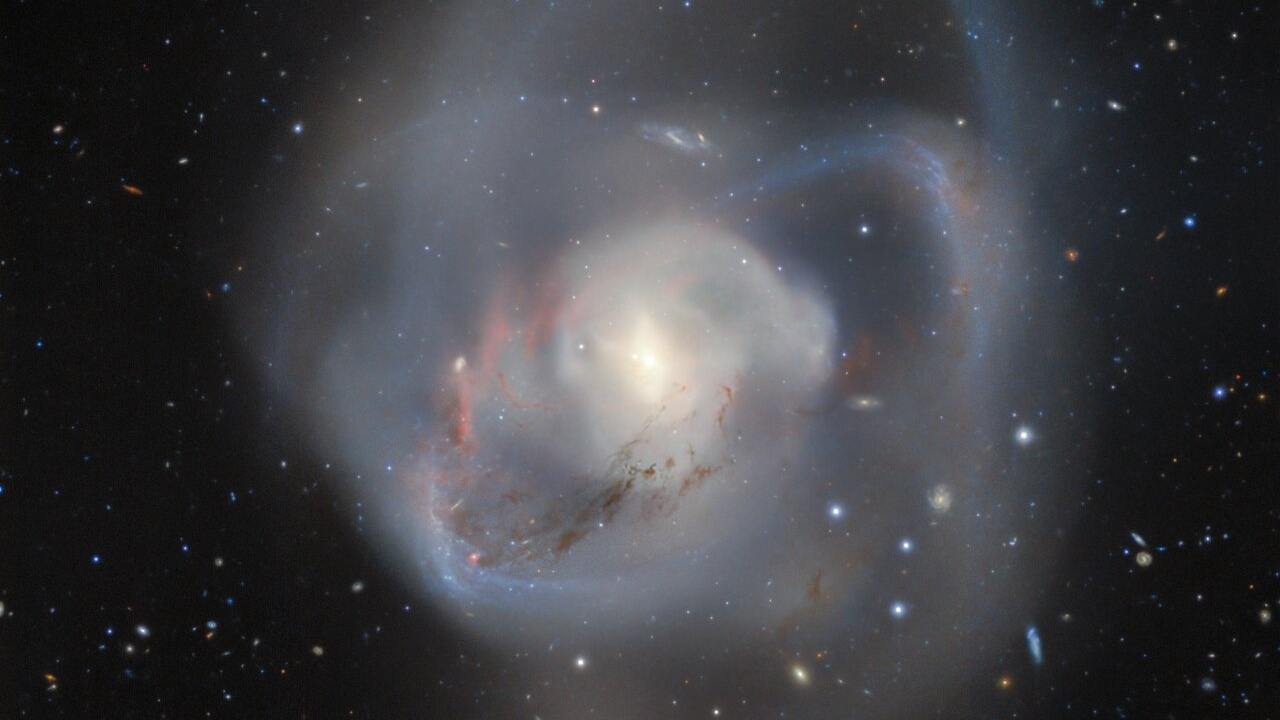Earth's nearest supermassive black hole pair lies in the wreckage of a galactic collision
Scientists observed the aftermath of two galaxies that smashed together around a billion years ago. It harbors the closest supermassive black hole binary to our planet.

Astronomers have discovered a duo of monster black holes hiding in the wreckage of a cosmic collision that occurred between two spiral galaxies about a billion years ago. They're located around 90 million light-years away from us.
The team identified this pairing, or "binary system," of supermassive black holes while examining the chaotic heart of the galaxy merger, known as NGC 7727, with the Gemini South telescope. This telescope is located in the dry atmosphere of the Cerro Pachón mountain in the Chilean Andes.
The current state of NGC 7727 is of particular interest to astronomers because it offers us a hint of what the Milky Way will look like in around 4.5 billion years, when it collides with its neighboring spiral galaxy Andromeda . At present, Andromeda sits around 2.5 million light years away from our home galaxy.
The newfound binary supermassive black holes appear to orbit each other and have masses of 154 million times that of the sun and 6.3 million times that of the sun, respectively. Currently, the team behind the discovery say the black hole's are around 1,600 light years apart, but eventually, like their parent galaxies, they will collide and merge. Upon merging, they'll create an even stronger supermassive black hole with the total of their combined masses.
Related: Supermassive black hole chews up huge star, spits stellar ‘guts’ into space (video)
This will happen because, as these black holes orbit each other, they send gravitational waves rippling out through space. These ripples carry away angular momentum from the pair that continuously causes them to draw closer together until, in an estimated 250 million years from the point at which they've been spotted, they will meet.
Cosmic chaos in colliding galaxies
These dueling black holes would have caused chaos in the earlier stages of the merger of their host galaxies, as that galactic dance would have thrown stars and dust away from their centers. And those straggler objects would have then been drawn into the immense gravitational influence of the supermassive black holes. The shift in position of these galactic contents can actually be seen by astronomers, represented by a large-scale change in the galaxies' shapes.
Breaking space news, the latest updates on rocket launches, skywatching events and more!
NGC 7727, in the constellation of Aquarius, is a good example of what happens to spiral galaxies when they collide, as this single unified galaxy is an amorphous blob, lacking the distinctive features of both galaxies that met to create it. The spiral arms of these galaxies have been wiped away in exchange for disarray.
An image of this chaotic sort of "super" galaxy was captured in stunning detail by the Gemini South telescope instrument Gemini Multi-Object Spectrograph (GMOS). Prominent in the image are vast swirling bands of interstellar dust and gas appearing like nebulous spider webs wrapping around the progenitor galaxies' merging hearts.
Because the new galaxy is still reeling from its violent creation, clear within the larger structure of NGC 7727 are scattered patches of intense star formation — called "starburst regions — which are created when two gas-rich galaxies slam into one another, triggering an influx of dense gas and dust that act as building blocks for star birth. Blazing blue, young stars throughout NGC 7727 also suggest there's quite a bit of star birth going on.
At least 23 of the current stellar nurseries within the galaxy have the potential to become collections of tens of thousands — or even millions — of stars, which astronomers call "globular clusters." These clusters are known to form in regions of high stellar birth common in merging galaxies.
As the dust settles, figuratively and literally, and star formation slows in NGC 7727, the galaxy will begin to take the shape of an elliptical galaxy filled with older stars — and live with a single, 160.3 solar mass supermassive black hole at its heart.

Robert Lea is a science journalist in the U.K. whose articles have been published in Physics World, New Scientist, Astronomy Magazine, All About Space, Newsweek and ZME Science. He also writes about science communication for Elsevier and the European Journal of Physics. Rob holds a bachelor of science degree in physics and astronomy from the U.K.’s Open University. Follow him on Twitter @sciencef1rst.

